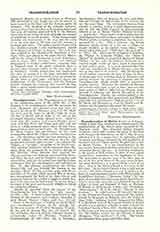

Transfiguration of Christ, FEAST OF, August 6, double second class, celebrated to commemorate the manifestation of the Divine glory recorded by St. Matthew (xvii).
The Armenian bishop Gregory Arsharuni (about 690) ascribes the origin of this feast to St. Gregory the Illuminator (d. 337?), who, he says, substituted it for a pagan feast of Aphrodite called Vartavarh (roseflame), retaining the old appellation of the feast, because Christ opened His glory like a rose on Mount Thabor. It is not found however in the two ancient Armenian calendars printed by Conybeare (Armenian Ritual, 527 sq.).
It probably originated, in the fourth or fifth century, in place of some pagan nature-feast, somewhere in the highlands of Asia. The Armenians at present keep it for three days as one of the five great feasts of the year (seventh Sunday after Pentecost); it is preceded by a fast of six days. Also in the Syriac Church it is a feast of the first class.
In the Greek Church it has a vigil and an octave. The Latin Church was slow in adopting this feast; it is not mentioned before 850 (Martyrology of Wandelbert, Gavanti, “Thesaurus liturg.”, II, Au-gust); it was adopted in the liturgy about the tenth century in many dioceses, and was celebrated mostly on August 6; in Gaul and England, July 27; at Meissen, March 17; at Halberstadt, September 3, etc. (Grotefend, “Zeitrechnung”, II, 2, 89; Ebner, “Missale R. Iter Italicum”).
In 1456 Callixtus III extended the feast to the Universal Church in memory of tie victory gained by Hunyady at Belgrade over the Turks, August 6, 1456. Callixtus himself composed the Office.
It is the titular feast of the Lateran Basilica at Rome; as such it was raised to a double second class for the Universal Church, November 1, 1911. On this day the pope at Mass uses new wine or presses a bunch of ripe grapes into the chalice; raisins are also blessed at Rome (Hampson, “Cal. medii aevi”, II, 176). The Greeks and Russians bless grapes and other fruit.
F. G. HOLWECK.


